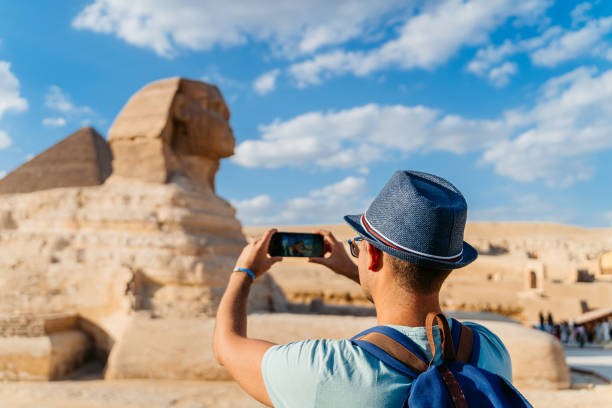
06 Days / 05 Nights Luxor Aswan package
06 Days / 05 Nights Luxor Aswan package
Highlights of the program: Luxor City: called by Thebes in the old era & it is the most famous tourist’s attraction cities in Egypt because it’s considered an open air museum where clients surrounded by monuments everywhere & t...
Read more...INCLUDED
Package Includes
- Meet & assist at the airport.
- Airport / Train Transfers by Private A/C vehicle
- 03 Nights' accommodation in Luxor based on Bed & breakfast
- 02 Nights' accommodation in Aswan based on Bed & breakfast
- All entry fees for sites mention in the program.
- Above mentioned sightseeing in the program.
- Private Egyptologist guide during the tour.
- Available language: English, Spanish, German & French (other language with supplement).
- All service charges and taxes
Add Value:
- Unlimited mineral water & snacks during the sightseeing.
- Local Sim-Card with internet date per family per package.
EXCLUDED
Package Excludes
- Egypt Entry Visa
- International flight ticket as well as the domestic flight ticket or train tickets if any.
- Any optional tours or Meals or Beverage during tour or Personal expenses or any services didn’t mentioned in the itinerary.
- Travel insurance & Banking transmission fees.
- Tipping.
NOTES
Important notes & traveling tips:
- The major schedule of the cruises:
- 03 nights ex Aswan on Wednesday or Friday & few cruises on Monday.
- 04 nights ex Luxor on Saturday or Monday & few cruises on Thursday.
- Rate based on the above mentioned number of travelers, in case there is an increase or decrease in the number of travelers or change of date, Egypt Promotion Travel keeps the right to change its rate accordingly.
- All transfers throughout the entire trip on private basis by A/C Deluxe Vehicle.
- All above mentioned sightseeing on Private basis on Cairo and joining other guests on board the cruise, including entrance fees
- Cruise itineraries may be changed without prior notice due to navigational circumstances may be in sequences but not in visits.
- Rates are including taxes and service charges
- Hotels official Check in at 15:00 hrs. & Check out at 12:00 hrs.
- Cruise official Check in before lunch at 12:00 hrs. & check out after breakfast at 08:00 hrs.
- International meals are serving at the hotels and onboard of the cruises.
- Full Day tours starts at 09:00 hrs. Till 17:00 hrs. (Maximum 8 hours).
- Half Day tours starts at 09:00 hrs. Till 13:00 hrs. OR at 12:00 hrs. Till 16:00 hrs. (Maximum 4 hours).
- Our rates do not include any kind of any insurance.
- Drones and wireless planes are not allowed in Egypt at all and will be confiscated at borders on arrival.
- Tipping is a way of life in Egypt which used even among Egyptian citizens to show their satisfaction & appreciation toward the provided services & all kind of tips are not included in our rates unless stated in our inclusions.
- There are 2 accepted ways of payment in Egypt:
- Credit card (fees 2.5% of total amount).
- Bank transfer (excluding banking fees according your bank regulations).
- Room Types & special requests:
- Triple Rooms are usually twin or double room with roll away extra bed & not 3 standard beds.
- Twin rooms or King Size bed rooms are subject to availability in check in date as cannot be confirmed in advance.
- In case accommodation special request: we can confirm only when we get a hotel confirmation otherwise it will be according their availability upon check-in time.
- Please make sure that your passport is valid for at least 6 months prior the arrival date to Egypt as some airlines set a condition of this minimum validity in order to avoid any problems while check in to the flight.
- Weather in Egypt – The climate of Egypt is a hot season from May to September and a cool season from October to April.
- Dress Code in Egypt – we recommend a prober dress code according the traveling month. The hot shorts not recommended specially at religious places & allowed in resort cities like Sharm, Dahab, El Gouna, Marsa Alam & Hurghada.
- Some nationalities can apply for visa directly using link https://www.visa2egypt.gov.eg/eVisa/Home?VISTK=R0UQ-4Y5W-9YE7-J4ES-IHM2-ZQ84-V2SU-TUYU-ADQC-C5D6-TH8W-MVJR-NU0S-RJRY-PTLX-63LH
-
1Day 01: Arrival to Luxor.Pick-up from Airport / Train Station / Hotel in Luxor by Egypt Promotion Travel representative who will assist you through airport customs & formalities if needed.Transfer to the hotel to check-in & overnight at Hotel.Meals: No Meals.
-
2Day 02: Luxor – Half Day tour West BankBreakfast at the hotel.Join your private experienced Egyptologist tour guide for half day East Bank tour to visit the west bank – Valley of the Kings (Tut tomb entrance with extra charge), Hatshepsut temple & Colossi of Memnon.Back to the hotel & overnight.Meals: Breakfast.
-
3Day 03: Luxor – Half Day tour East BankBreakfast at the hotel.Join your private experienced Egyptologist tour guide for half day East Bank tour to visit the amazing Temple of Luxor & the Karnak Temples.Back to the hotel & overnight.Meals: Breakfast.
-
4Day 04: Luxor – Edfu – Kom Ombo – AswanCheck-out after breakfast.Travel to Edfu & visit the temple of Edfu.Continue traveling to Kom Ombo & visit the temple of Kom Ombo.Arrive to Aswan and transfer to the hotel to check-in and overnight.Meals: Breakfast.
-
5Day 05: Abu Simbel – Philae temple in AswanEarly morning, have your breakfast box from the hotel and escort by your Egyptologist tour guide to travel to visit Abu Simbel by private air-conditioned vehicle.Return to Aswan after the tour and transfer back to the hotel for some rest.In the afternoon; transfer to visit the beautiful Temple of Philae.Back to the hotel and overnight.Meals: Breakfast.
-
6Day 06: Final DepartureBreakfast at the hotel.Check-out and transfer to Aswan airport / Train station for your final flight.Meals: Breakfast.
Choose Hotel
PRICING PLANS
- # NO. OF ADULTS NO. OF CHILDREN TOTAL
- Room 1 x $0 x $0 $0
Related Tours
Egypt promotion provides you with very rare Egypt tour package deals for 2024. Make your vacation package special by choosing one of our tailored packages in Egypt.











